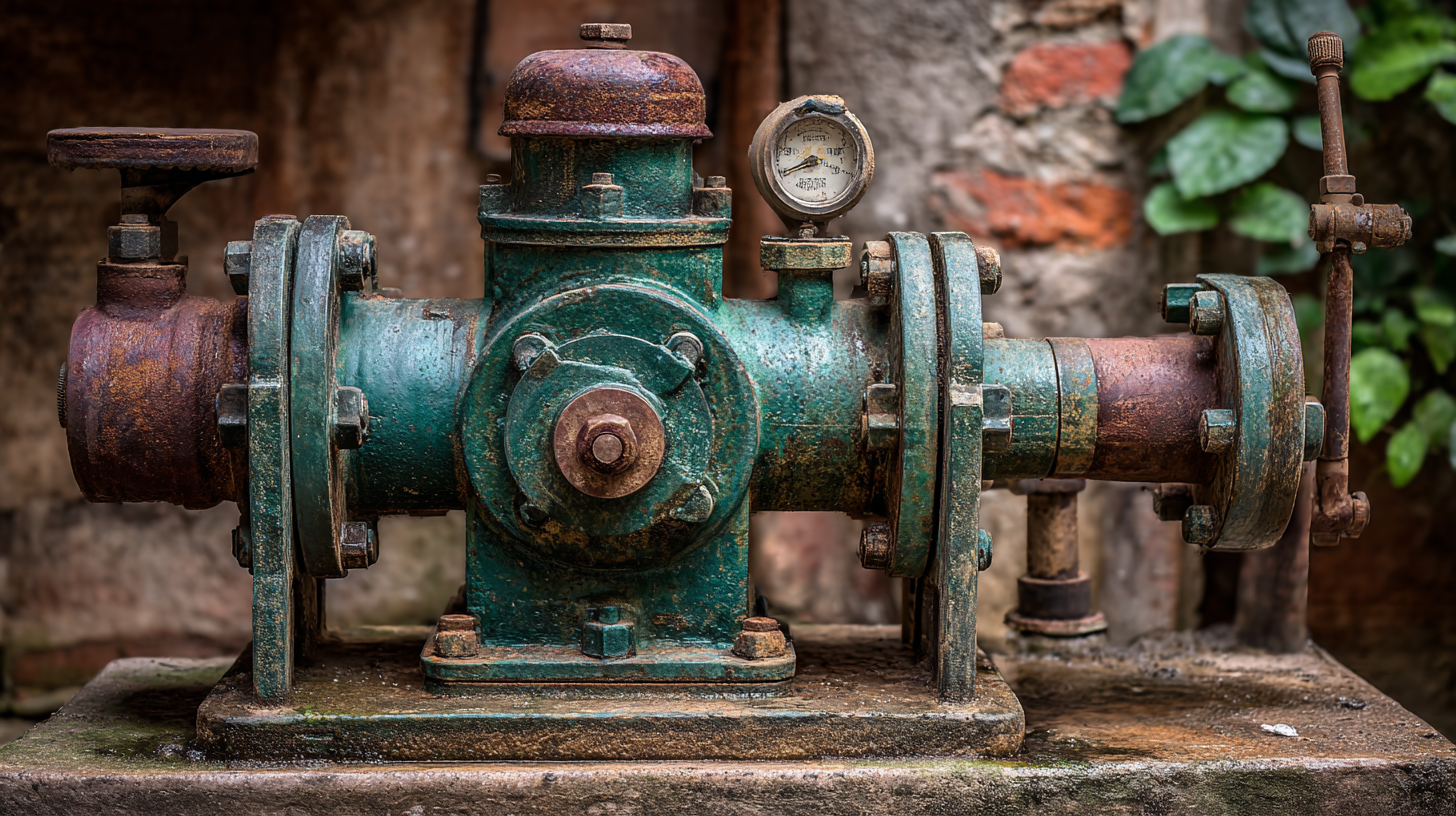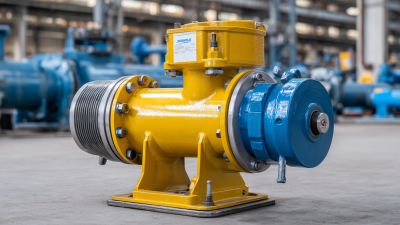7 Best Practices to Maximize Efficiency of Your Well Pressure Pump
In the world of water management and irrigation, the efficiency of a well pressure pump is crucial to ensure optimal performance and sustainability. According to the U.S. Geological Survey, nearly 13% of the water supply for agricultural purposes comes from groundwater sources, highlighting the importance of effective well pressure pumps in maximizing water efficiency. Additionally, a recent industry report indicates that upgrading and maintaining well pressure pumps can enhance energy efficiency by up to 30%, leading to significant cost savings over time.
As water scarcity continues to be a pressing global issue, adopting best practices for well pressure pump operation is essential not only for farmers and businesses but also for environmental stewardship. This blog will dive into seven best practices that can help you maximize the efficiency of your well pressure pump, ensuring you make the most of your water resources while minimizing operational costs.

Understanding the Importance of Well Pressure Pump Efficiency
Understanding the efficiency of well pressure pumps is crucial for optimizing their performance and ensuring the sustainability of water resources. A well functions best when the pressure pump operates at optimal efficiency, which not only maximizes water extraction but also minimizes energy consumption. Research indicates that the pump's design, including factors like clearance volume, plays a significant role in its overall output performance. For instance, excessive clearance volume can hamper the internal flow characteristics of the pump, leading to decreased efficiency and increased operating costs.
To improve the efficiency of your well pressure pump, consider implementing variable speed pumps and pressure sensors. These innovations can dynamically adjust the pump's operation based on real-time needs, reducing unnecessary energy use. Another tip is regular maintenance; ensuring that all components are clean and free from obstructions can significantly enhance performance. Additionally, adopting solar PV systems for powering pumps can lead to remarkable energy savings and sustainability, demonstrating how renewable energy sources can be effectively harnessed in agricultural applications.
By focusing on these practices, you not only boost your well pressure pump's efficiency but also contribute to a more sustainable environment and operational economy.
Regular Maintenance Tips for Optimal Pump Performance
Regular maintenance is crucial for optimal pump performance, ensuring that your well pressure pump runs efficiently and reliably. To maximize its lifespan, it's essential to establish a consistent maintenance schedule that includes regular inspections and cleaning. Checking for wear and tear on components like seals and bearings can prevent minor issues from escalating into costly repairs. Utilizing monitoring technologies can also aid in identifying performance drops early, allowing for timely interventions.

In addition to routine checks, it's important to keep the pump environment clean and free from debris. Ensuring proper electrical connections and verifying pump alignment can further enhance efficiency. Educating your team on best maintenance practices not only helps in extending pump life but also contributes to safety in the workplace. By focusing on these key aspects of maintenance, industries can ensure that their well pressure pumps operate at peak efficiency while minimizing downtime and expenses.
How to Choose the Right Pressure Pump for Your Needs
When choosing the right pressure pump for your needs, it’s essential to assess your specific requirements before making a decision. Start by evaluating the flow rate and pressure levels needed for your application. For instance, if you’re using the pump for irrigation, consider the water demand of your plants and calculate the required gallons per minute (GPM). Selecting a pump that meets these criteria ensures optimal performance.
Additionally, consider the pump’s power source. Electric pumps are convenient for consistent use, while gas-powered models may provide more flexibility in remote locations. Don’t overlook the importance of the pump's durability and maintenance. Look for high-quality materials that can withstand varying environmental conditions, which can ultimately save you time and money in repairs.
Lastly, always consult with a specialist to get tailored advice for your situation. They can provide insights on the most efficient pump for your needs, which can enhance the functionality and longevity of your pressure pump system. This expert guidance is invaluable, helping you make an informed purchase that aligns with your operational goals.
7 Best Practices to Maximize Efficiency of Your Well Pressure Pump - How to Choose the Right Pressure Pump for Your Needs
| Best Practice | Description | Benefits | Recommended Pump Type |
|---|---|---|---|
| Proper Sizing | Choose a pump that matches your system's requirements. | Improved efficiency and reliability. | Submersible or Jet Pumps |
| Regular Maintenance | Perform routine inspections and servicing. | Prolongs pump life and prevents failures. | Any type of pressure pump |
| Use a Pressure Switch | Incorporate a switch to control pump operation based on pressure. | Ensures optimal pressure and reduces energy consumption. | Centrifugal Pumps |
| Select Quality Materials | Use pumps made of durable, corrosion-resistant materials. | Increases durability and reduces maintenance frequency. | Submersible or Diaphragm Pumps |
| Install a Filter | Add a filter to remove debris before it enters the pump. | Protects the pump and maintains flow efficiency. | All types |
| Ensure Proper Ventilation | Make sure the pump area has adequate airflow. | Prevents overheating and maintains optimal operation. | Centrifugal Pumps |
| Monitor Energy Usage | Track the power consumption of the pump. | Identifies inefficiencies and potential savings. | All types |
Implementing Advanced Technology to Enhance Pump Efficiency
Implementing advanced technology in well pressure pump systems is essential for enhancing their operational efficiency and reliability. According to a report by the Energy Information Administration, optimizing pump systems can lead to a reduction in energy consumption by up to 30%. This efficiency gain not only lowers operational costs but also contributes to sustainability efforts in the industry. The integration of IoT-enabled sensors allows real-time monitoring of pressure and flow rates, enabling timely interventions and predictive maintenance, which can prevent costly downtime.
Moreover, utilizing variable frequency drives (VFDs) in conjunction with these advanced technologies can further enhance performance. A study published by the Hydraulic Institute reveals that VFDs can improve energy efficiency by allowing pumps to adjust their speed according to demand, which can result in energy savings of 25% or more. By embracing these innovative solutions, companies can not only maximize the efficiency of their well pressure pumps but also enhance their overall productivity and reliability in the field.
Monitoring and Analyzing Pump Performance for Continuous Improvement
Monitoring and analyzing the performance of well pressure pumps are crucial steps in ensuring their efficiency and longevity. According to a report by the Hydraulic Institute, regular monitoring can lead to a reduction in operational costs by up to 25%. This not only involves tracking energy consumption but also analyzing flow rates, pressure readings, and overall pump vibrations. By utilizing advanced technologies such as IoT sensors and real-time data analytics, operators can gather vital performance metrics and swiftly identify any anomalies before they escalate into significant failures.

Moreover, the continuous improvement of pump performance hinges on systematic data analysis. A study published in the Journal of Energy Resources Technology found that implementing performance monitoring systems improved pump efficiency by an average of 15% over time. By establishing key performance indicators (KPIs) and conducting periodic performance reviews, operators can assess whether their pumps are operating within optimal ranges and make informed decisions regarding maintenance schedules and upgrades. This proactive approach not only enhances efficiency but also extends the lifespan of the equipment, leading to significant cost savings and improved system reliability.
Related Posts
-

5 Essential Tips to Maximize Efficiency with Ultra Jet Pumps in Your Industry
-

Ultimate Checklist for Selecting the Right Surface Jet Pump for Your Industrial Needs
-

How to Select the Right Fracking Pump for Your Oil and Gas Operations
-

How to Choose the Right Jet Pump for Your Industrial Needs Based on Performance Data
-

Exploring Innovative Alternatives to Flo Jet Pumps for Efficient Fluid Management
-

Ultimate Guide to Choosing the Right Oil Jet Pump for Your Industry Needs
